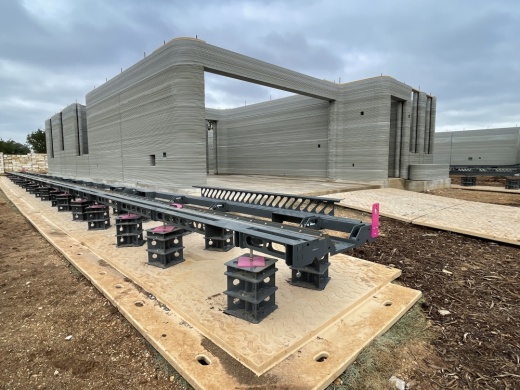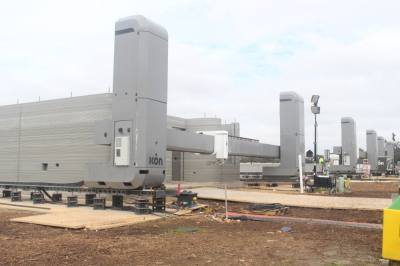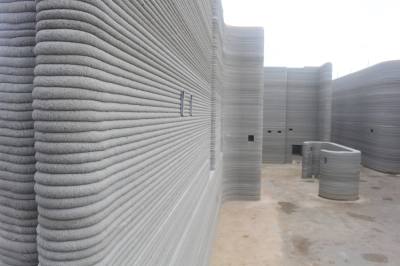The world’s largest community of 3D-printed homes is the result of a partnership among the city of Georgetown; ICON, a construction technology company; Lennar, a home construction company; BIG-Bjarke Ingles Group, an architectural firm; and real estate developer Hillwood Communities. It is a new approach to building homes in a time when the cost of construction is increasing; the labor force is decreasing; and mortgage interest rates hover around 7%.
“If you think about the combination of those two things happening in a moment where we’re seeing the disparity between people who can afford houses and then a house that’s now going to cost an additional $100,000, we need to be thinking about ways to drive down cost and building at scale in a meaningful way,” ICON Chief People Officer Dimitri Julius said.
The construction industry is facing a shortage of skilled, qualified builders, Julius said. In February, Associated Builders and Contractors issued a report that nearly 650,000 additional workers were needed to meet the demand of labor.
At the new Georgetown community, it takes a team of five workers to set up the system to begin printing a home.
Interior and exterior wall systems, all completed by the same machine with the same material set, “is a really big provocation,” Julius said.
“If you can think about it in terms of a hundred or a thousand or 10,000 [homes], now you’re really starting to gain operational efficiencies; you're limiting the need for additional materials; you’re eliminating the need for additional trade work; and, by the way, these job sites become significantly more safe,” he said.
The cement used to form the 3D-printed walls is meant to better withstand extreme weather compared to conventional houses. The walls are also resistant to water, mold, termites and fire damage. In addition, the families who live in them are expected to see lower energy bills as ICON said its walls provide greater insulation to decrease temperature fluctuations.
“One of the fantastic things about this is with the digital design nature of these printers, everything we design in code exists in a 3D space before we print it,” Julius said. “So we’ve got a lot of flexibility to change the design. There’s five houses being printed right now, and all five of them have completely different floor plans.”
The homes are expected to go on sale in the beginning of 2023 and the developers hope to have them inhabited by the middle of next year. Georgetown Mayor Josh Schroeder said they will address a need for housing in the area and cut back on waste that goes into traditional homebuilding.
“Seeing [ICON] experiment with all of this stuff, they’re not afraid to think outside the box and think about new ways to do things,” Schroeder said. “This is going to be a flagship for this community. I think people are going to be coming and looking at these houses decades from now to say, ’This is where it started.’”








